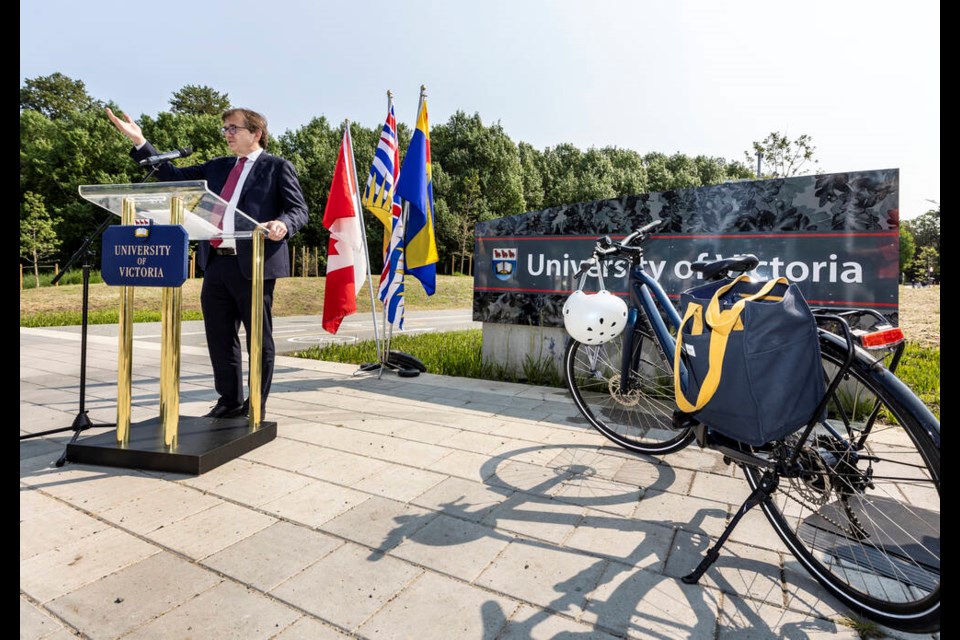With the University of Victoria’s perimeter pathway as a backdrop, federal Natural Resources Minister Jonathan Wilkinson announced $11 million in funding Wednesday for bike lanes and other facilities to enhance “active transportation” around Vancouver Island.
The university will receive close to $2.4 million to further its efforts to create new routes for both cyclists and pedestrians and increase safety, all of which will also benefit the larger community, said UVic president Kevin Hall, noting that more than 5,000 cyclists come to the campus every day.
“We have just such an active community,” he said. “Every weekend we’re just packed with cyclists and people using this campus as recreation.”
Along with funds for the UVic Cycling Plan, money will go toward safety upgrades to existing infrastructure on Fort Street, protected bike lanes along the Tillicum corridor, ongoing improvements on Shelbourne Street and installation of a waterfront walkway and viewing area in Qualicum.
Victoria Mayor Marianne Alto applauded the contribution to the city’s work on Fort Street.
“These improvements will expand safe, affordable, and convenient transportation options for residents, commuters, and visitors,” she said in a statement. “The route connects people to school, workplaces, recreation and experiential opportunities and other daily destinations, which helps to reduce the cost of living, improve community health, and make our neighbourhoods more fun and resilient.”
Funding will also go to transit shelters, upgraded road crossings, and improved lighting and signage.
The Toquaht Nation, Tseshaht First Nation, Hupacasath First Nation and the City of Port Alberni will receive some of the funding for active-transportation planning.
Giving people better access to active transportation is a simple way to reduce carbon emissions, Wilkinson said.
“If we are to achieve our emission-reduction targets as science tells us we must, we have to decarbonize Canada’s transportation sector,” he said.



